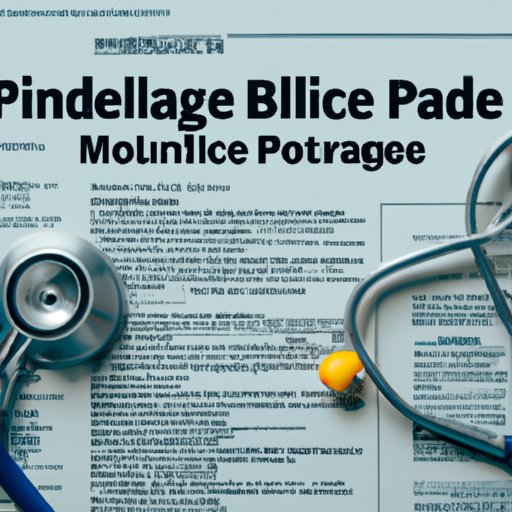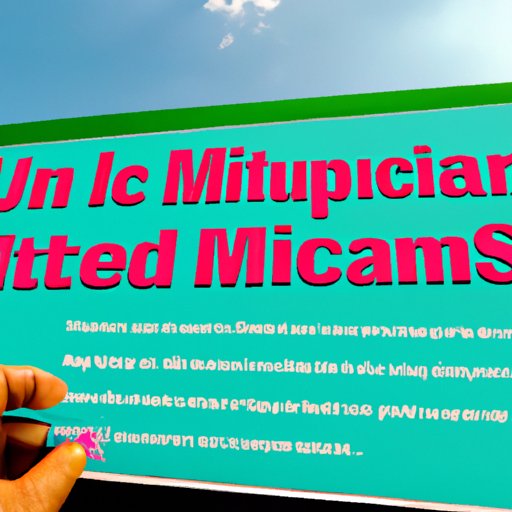Introduction
As healthcare providers, it is essential that you understand how to bill Medicare. Medicare is a government-funded health insurance program that provides coverage for millions of Americans aged 65 and over, as well as certain younger individuals with disabilities. Providers must comply with the requirements and regulations set forth by Medicare in order to be paid for services rendered.
In this article, we will provide an overview of the Medicare billing requirements for providers, a step-by-step guide to billing Medicare as a provider, tips for submitting accurate claims, common mistakes to avoid when billing Medicare as a provider, and understanding Medicare reimbursement rules and regulations.
Overview of Medicare Billing Requirements for Providers
In order to bill Medicare, providers must first register with Medicare. This can be done through the Centers for Medicare & Medicaid Services (CMS) website. Once registered, providers must submit claims using the appropriate forms and codes. Claims must include the patient’s diagnosis, procedure codes, and the amount charged for services provided. CMS also requires providers to follow up on denials or rejections of claims.
Understanding how to properly bill Medicare is not only important for getting paid, but also for providing quality care to patients. According to a study conducted by the National Institute for Health Care Management (NIHCM), “The ability to accurately document and bill for services is critical to ensuring the quality of care delivered and for preventing fraud and abuse.”
Step-by-Step Guide to Billing Medicare as a Provider
Billing Medicare as a provider can seem like a daunting task, but following a few simple steps can make the process much smoother. Here is a step-by-step guide to help you get started:
1. Understand the Various Types of Medicare Billing Forms
The first step in the Medicare billing process is understanding the various types of Medicare billing forms. The most commonly used forms are the CMS-1500 and UB-04. The CMS-1500 form is used for physician and outpatient services, while the UB-04 is used for inpatient services.
2. Gather Necessary Information and Documentation
Before submitting a claim, providers must gather all the necessary information and documentation. This includes the patient’s name, address, date of birth, and Social Security number, as well as the provider’s information. Additionally, providers must have the patient’s diagnosis and procedure codes, and the amount charged for services.
3. Submit Claims Correctly
Once all the necessary information and documentation is gathered, providers must submit the claim correctly. Claims must be submitted electronically through the Medicare Administrative Contractor (MAC). Paper claims are no longer accepted.

Exploring the Medicare Billing Process for Providers
Now that you know the basics of how to bill Medicare, let’s explore the Medicare billing process for providers in more detail. Here are the key steps involved in the process:
1. Verifying Eligibility
The first step in the Medicare billing process is verifying the patient’s eligibility. Providers must check to make sure the patient is enrolled in Medicare and has active coverage. This can be done by checking the patient’s Medicare card or contacting the MAC.
2. Completing Required Paperwork
Once eligibility is verified, providers must complete the required paperwork. This includes the appropriate Medicare billing form, as well as any supporting documentation. All paperwork must be filled out accurately and completely.
3. Processing Claims
After the paperwork is completed, providers must submit the claim to the MAC for processing. Claims can be submitted electronically using the Medicare Common Electronic Data Interchange (CEDI). It is important to note that claims must be submitted within one year of the date of service.
4. Following Up on Denials
It is not uncommon for Medicare claims to be denied or rejected. If this happens, providers must follow up with the MAC to determine why the claim was denied. Providers must then resubmit the claim with the correct information if applicable.

Tips for Submitting Accurate Medicare Claims
Submitting accurate Medicare claims is essential for getting paid. Here are a few tips to help ensure your claims are processed quickly and efficiently:
1. Double Check All Information
Before submitting a claim, double check all the information to make sure it is accurate and complete. This includes the patient’s name, address, diagnosis codes, and procedure codes. Double checking information can save time and prevent costly errors.
2. Understand the Different Codes Used
It is important to understand the different codes used when submitting claims. Each code represents a specific service or procedure and must be entered accurately in order for the claim to be processed correctly.
3. Keep Detailed Records
Keeping detailed records of all claims submitted is a good practice. This can help providers track claim status, identify trends, and spot potential errors.

Common Mistakes to Avoid When Billing Medicare as a Provider
There are a few common mistakes to avoid when billing Medicare as a provider. These include:
1. Incorrect or Incomplete Information
Providers must always make sure all information is accurate and complete. This includes the patient’s name, address, diagnosis codes, and procedure codes. Entering incorrect or incomplete information can result in delays or denials.
2. Misusing Codes
It is important to understand the different codes used when submitting claims. Using the wrong codes can lead to denials or incorrect payments.
3. Not Following Up on Denials
If a claim is denied or rejected, it is important to follow up with the MAC to determine why. Providers must then resubmit the claim with the correct information if applicable.
Understanding Medicare Reimbursement Rules and Regulations
In order to be successful at billing Medicare, providers must understand the rules and regulations governing reimbursement. Here are a few tips to help providers stay on top of changes in Medicare reimbursement rules and regulations:
1. Research Rules and Regulations
It is important to research the rules and regulations governing Medicare reimbursement. The CMS website is a great resource for staying up-to-date on changes in reimbursement policies.
2. Keep Up with Changes
Medicare reimbursement rules and regulations are constantly changing. Staying up-to-date on changes can help providers ensure they are billing correctly and avoiding costly errors.
3. Understand Fee Schedules
It is also important to understand the fee schedules established by Medicare. These are updated periodically and can help providers determine what they can charge for services.
Conclusion
Understanding how to bill Medicare as a provider is essential for getting paid and providing quality care to patients. In this article, we outlined the Medicare billing requirements for providers, a step-by-step guide to billing Medicare as a provider, tips for submitting accurate claims, common mistakes to avoid when billing Medicare as a provider, and understanding Medicare reimbursement rules and regulations.
By following these steps, providers can ensure they are billing correctly and avoiding costly errors. Additionally, understanding the rules and regulations governing Medicare reimbursement can help providers stay on top of changes in reimbursement policies.
(Note: Is this article not meeting your expectations? Do you have knowledge or insights to share? Unlock new opportunities and expand your reach by joining our authors team. Click Registration to join us and share your expertise with our readers.)
